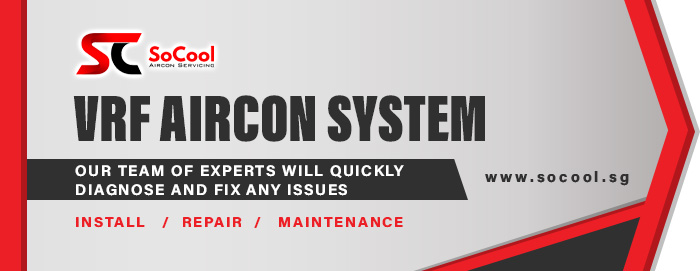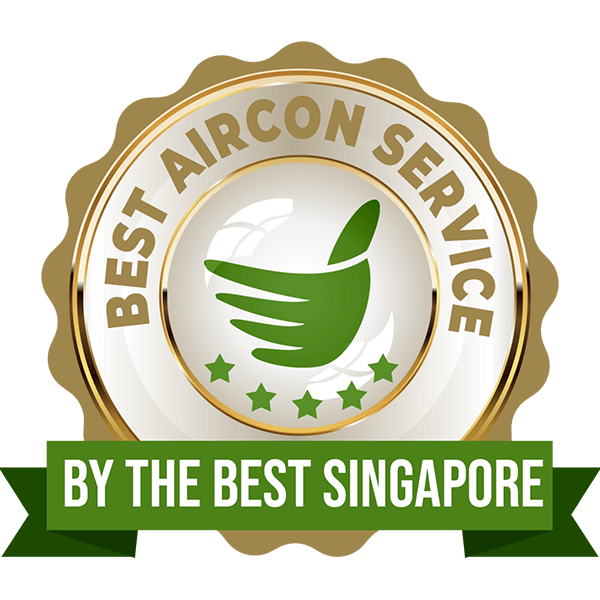VRF Aircon System Singapore
Home / Commercial / VRF Aircon System
VRF Aircon System
In the realm of HVAC (Heating, Ventilation, and Air Conditioning) technology, Variable Refrigerant Flow (VRF) systems stand out as one of the most innovative and efficient solutions for climate control in both residential and commercial spaces. As buildings become more sophisticated and energy-efficient, the demand for advanced HVAC systems like VRF continues to rise. In this article, we’ll delve into what VRF systems are, how they work, their benefits, and their applications.
What is a VRF System?
Variable Refrigerant Flow (VRF) systems, also known as Variable Refrigerant Volume systems, represent a cutting-edge approach to HVAC technology. Unlike traditional HVAC systems that use air ducts to distribute conditioned air, VRF systems utilize refrigerant as the medium for both heating and cooling. This innovative design allows for precise control over temperature levels in different zones within a building.
How Does a VRF System Work?
At the heart of a VRF system is its ability to vary the flow of refrigerant to indoor fan coil units based on the heating or cooling requirements of individual spaces. This is achieved through the use of advanced inverter-driven compressors that adjust their speed according to the demand for heating or cooling. During the cooling mode, the VRF system extracts heat from the indoor spaces and transfers it outdoors, while in the heating mode, it reverses the process by absorbing heat from the outdoor air and releasing it indoors. The system achieves this through the manipulation of the refrigerant flow, allowing for simultaneous heating and cooling in different areas of a building.
Benefits of VRF Systems
- Energy Efficiency: VRF systems are highly energy-efficient due to their ability to modulate the flow of refrigerant and match the exact heating or cooling demands of different zones. This results in reduced energy consumption and lower utility bills compared to traditional HVAC systems.
- Zoned Comfort Control: One of the key advantages of VRF systems is their ability to provide zoned comfort control. By independently controlling the temperature of individual zones, occupants can enjoy personalized comfort levels throughout the building, leading to increased satisfaction and productivity.
- Quiet Operation: VRF systems are designed to operate quietly, making them ideal for environments where noise levels are a concern. The use of inverter-driven compressors helps minimize noise during operation, ensuring a peaceful indoor environment.
- Flexibility in Design: VRF systems offer greater flexibility in system design compared to traditional HVAC systems. With smaller refrigerant piping and the absence of ductwork, VRF systems can be installed more easily in both new construction projects and existing buildings, allowing for greater design freedom and space utilization.
- Improved Indoor Air Quality: VRF systems utilize advanced filtration systems to remove dust, allergens, and other contaminants from the air, resulting in improved indoor air quality. This is particularly beneficial for individuals with respiratory issues or allergies.
- Cost Savings: While the initial cost of installing a VRF system may be higher than that of a traditional HVAC system, the long-term savings in energy costs and maintenance expenses often outweigh the upfront investment. Additionally, the ability to zone heating and cooling can further contribute to cost savings by reducing wasted energy in unoccupied areas.
Applications of VRF Systems
VRF systems are well-suited for a wide range of applications, including:
- Commercial Buildings: VRF systems are commonly used in office buildings, hotels, retail stores, and other commercial spaces where precise temperature control and energy efficiency are paramount. The ability to zone heating and cooling allows for optimal comfort levels in different areas of the building, regardless of occupancy patterns.
- Residential Buildings: VRF systems are gaining popularity in residential settings due to their energy efficiency, quiet operation, and zoned comfort control. They are particularly well-suited for multi-family dwellings, luxury homes, and retrofit projects where space constraints or existing ductwork limitations may pose challenges for traditional HVAC systems.
- Educational Institutions: VRF systems are increasingly being adopted in schools, colleges, and universities as a cost-effective solution for climate control in classrooms, auditoriums, and administrative buildings. The ability to independently control temperature levels in different areas allows for enhanced comfort and productivity among students and faculty.
- Healthcare Facilities: VRF systems are well-suited for healthcare facilities such as hospitals, clinics, and medical offices, where maintaining precise temperature and humidity levels is critical for patient comfort and well-being. The advanced filtration capabilities of VRF systems also help improve indoor air quality, reducing the risk of airborne contaminants and infections.
- Hospitality Sector: VRF systems are widely used in the hospitality sector, including hotels, resorts, and restaurants, where guest comfort is a top priority. The ability to provide zoned heating and cooling ensures that guests can enjoy personalized comfort in their rooms, lobbies, and other common areas, leading to a positive guest experience and higher satisfaction ratings.
In conclusion, Variable Refrigerant Flow (VRF) systems represent a paradigm shift in HVAC technology, offering unmatched energy efficiency, zoned comfort control, and flexibility in design. With their numerous benefits and wide range of applications, VRF systems are poised to revolutionize the way we heat and cool our buildings, ushering in a new era of comfort, sustainability, and efficiency in climate control. Connect with one of our HVAC specialists to learn more.











